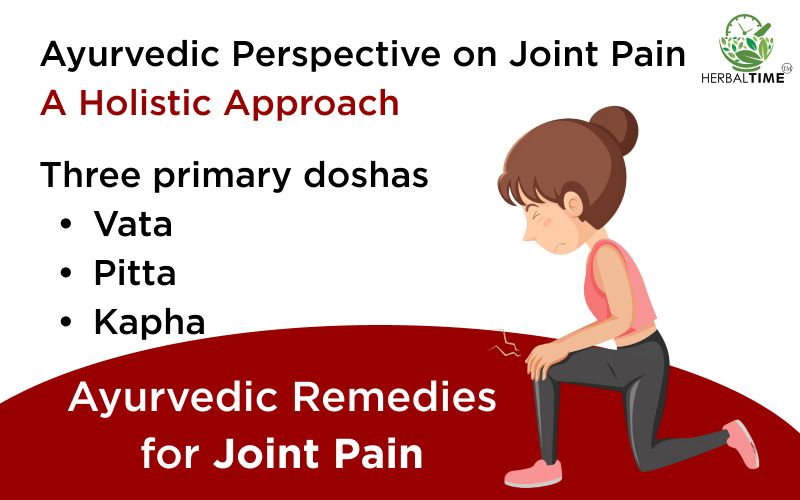Joint pain is a common issue affecting people of all ages and can significantly impact daily life. While conventional treatments often focus on symptomatic relief, Ayurveda offers a more holistic and preventative approach. Rooted in ancient Indian healing traditions, Ayurveda views joint pain as an imbalance in the body’s internal energies, known as doshas. By understanding the Ayurvedic perspective on joint pain, individuals can explore natural methods for healing, prevention, and long-term relief.
Understanding Joint Pain from an Ayurvedic Lens
In Ayurveda, the body is governed by three primary doshas—Vata, Pitta, and Kapha—each representing specific elements and qualities. When these doshas are in balance, the body functions harmoniously. However, when they become imbalanced, it can lead to various health conditions, including joint pain.
- Vata Dosha and Joint Pain: Vata, composed of air and ether elements, governs movement in the body. When Vata is out of balance, it can lead to dry, stiff, and painful joints, as well as discomfort during movement. This is especially common in colder, drier climates or in individuals experiencing stress.
- Pitta Dosha and Joint Pain: Pitta, made of fire and water elements, controls metabolism and heat in the body. Excessive Pitta can cause inflammation in the joints, leading to conditions like arthritis. Symptoms of Pitta imbalance include redness, warmth, swelling, and intense pain.
- Kapha Dosha and Joint Pain: Kapha, formed from water and earth elements, governs stability and lubrication. When Kapha is imbalanced, it can cause sluggishness and an accumulation of toxins (ama) in the joints, leading to stiffness, swelling, and pain. This is commonly seen in individuals with sedentary lifestyles or poor digestion.
Ayurvedic Remedies for Joint Pain
Ayurveda emphasizes treating the root cause of joint pain rather than just alleviating symptoms. Several natural remedies, herbs, and lifestyle changes can help restore balance to the doshas and promote joint health.
1. Herbal Treatments
- Ashwagandha: Known for its anti-inflammatory properties, ashwagandha helps reduce swelling and pain while improving joint flexibility.
- Turmeric: A powerful anti-inflammatory agent, turmeric contains curcumin, which can reduce pain and inflammation in the joints.
- Ginger: Often used to treat Vata imbalances, ginger is known to warm the body and reduce stiffness and pain in the joints.
- Boswellia: This herb, also known as frankincense, has anti-inflammatory properties and is particularly beneficial for Pitta-related joint pain.
2. Dietary Modifications
- Anti-inflammatory Foods: Foods like ghee, fresh vegetables, whole grains, and fruits can help reduce inflammation and nourish the joints.
- Avoid Cold and Dry Foods: Cold foods and drinks can aggravate Vata imbalances, while acidic foods can exacerbate Pitta. Avoiding processed foods, sugary items, and excess caffeine can also be beneficial.
- Hydration: Maintaining proper hydration is essential to support the lubrication of joints. Herbal teas such as ginger or turmeric tea can be especially helpful.
3. Oil Massages (Abhyanga)
Regularly applying warm herbal oils to the joints can provide relief from pain and stiffness. Mahanarayan oil, which is infused with herbs like ashwagandha and turmeric, is commonly used in Ayurveda to improve joint flexibility and reduce inflammation.
4. Yoga and Exercise
- Yoga: Gentle yoga postures can help improve joint mobility and reduce pain. Focus on poses that promote flexibility and balance, such as Vrikshasana (Tree Pose) and Trikonasana (Triangle Pose).
- Movement: Regular, moderate exercise helps improve circulation, reduce stiffness, and maintain healthy joint function.
5. Panchakarma (Detoxification)
Panchakarma is an Ayurvedic detoxification process that helps cleanse the body of accumulated toxins (ama), which can contribute to joint pain. This treatment involves a series of therapeutic procedures, such as oil massages, steam therapy, and herbal treatments, designed to restore balance and promote healing.
Lifestyle Adjustments
Ayurveda also emphasizes the importance of lifestyle changes to maintain overall well-being and prevent joint pain:
- Rest and Relaxation: Avoid overexertion and stress, as they can aggravate Vata and Pitta imbalances. Adequate rest and relaxation promote healing and reduce the risk of chronic joint issues.
- Mindful Movement: Avoiding abrupt or repetitive movements that strain the joints is essential. Practicing mindfulness while moving or exercising can help prevent unnecessary stress on the body.
- Sleep Hygiene: Ensuring restful and adequate sleep is critical for tissue repair and overall body rejuvenation.
Conclusion
Ayurveda offers a comprehensive, natural approach to managing joint pain by addressing its root causes—imbalances in the doshas. Through herbal treatments, dietary changes, yoga, and lifestyle modifications, individuals can experience long-term relief and prevent further discomfort. By incorporating these holistic practices into daily life, it is possible to restore balance, reduce pain, and promote overall joint health. As always, it is recommended to consult with an Ayurvedic practitioner before beginning any new treatments to ensure the approach is tailored to individual needs.journey towards natural beauty with Ayurveda today and experience the transformative power of holistic skin care.

